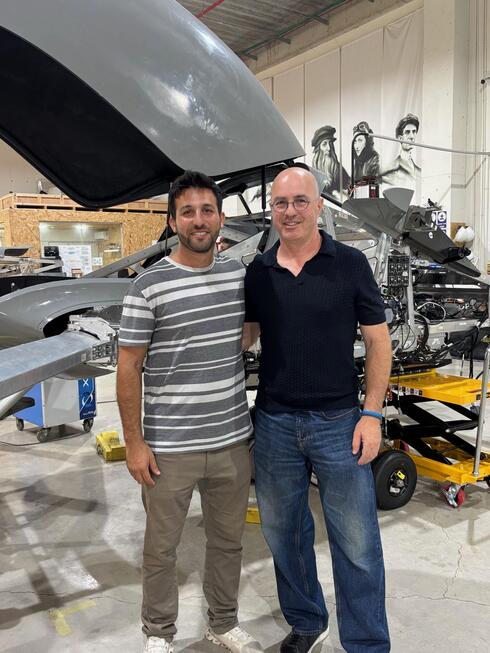By Maayan Hoffman/the Media Line
Copyright ynetnews

The world is full of traffic jams. But what if, one day soon, commuters could fly their vehicles through the sky instead of sitting in endless lines of cars? An Israeli startup called AIR is working to make that a reality. The company is developing a two-seat electric vertical takeoff and landing aircraft, known as an eVTOL, that it hopes to launch in the United States by this time next year. Unlike traditional aircraft, AIR’s vehicle is designed for everyday use and individual ownership. The idea is to make daily travel as simple as driving a car, with the ability to take off and land on any flat surface. The aircraft’s wings can fold so it fits into a standard parking space. AIR is already seeking certification from the FAA “Why electric aviation?” said AIR CEO Rani Plaut during a recent visit to the company’s headquarters in Pardes Hanna-Karkur, a town in northern Israel. “Simplicity.” “The motor is much simpler and smaller, so you can have a lot of small motors instead of one big jet,” he said. “Once you have smaller motors, you can control them with software. The control system is no longer based on push rods, cables or hydraulics – it’s a computer command. The environmental impact is much lower. Pollution is almost zero. And it’s much easier to build.” Pointing to the company’s AIR ONE prototype, he added, “This is like what Tesla is to the automotive sector—fewer moving parts, actuators and liquids.” Designed with safety in mind Safety, Plaut emphasized, is central to the design. The AIR ONE includes four batteries and eight motors. Each battery powers two motors on opposite sides, meaning the aircraft can lose up to half of its propulsion system and still remain airborne. “The aircraft will alert you to a critical situation and land itself,” he said. “But you can lose a motor, a flight controller, or even a battery and still land safely.” If all four batteries fail, a built-in parachute can deploy to bring the entire aircraft down safely. Plaut said AIR’s approach stands apart from others in the industry. “Some companies are building piloted drones, which can be risky,” he said. “You sit on a drone and don’t need certification if it weighs under 250 pounds.” This is the same as Tesla is for the automotive sector—much fewer moving parts, actuators and liquids In contrast, AIR is actively pursuing certification and aims to make flying as mainstream as driving. “There’s a whole ecosystem around the car engineers, regulators, users, mechanics,” Plaut said. “My 19-year-old son drives. My 85-year-old father drives. Not very well, but they drive. And it works.” He believes personal aircraft can eventually be just as commonplace. Today, dozens of 1.5-ton vehicles share the highway without issue. The barrier to aerial commuting, he said, is less about technology and more about perception. “People think differently about planes. Pilots are seen as highly skilled professionals,” Plaut said. “But not every aircraft needs to be as complex as an F-35 or F-22. We’ve learned how to design things more simply, whether cars, boats or planes.” Specs and defense applications The AIR ONE weighs about 1.2 tons and can carry a payload of 550 pounds, roughly two adults with light luggage or cargo. An autonomous version is in development. It shares the same core infrastructure but has no seats or screens. AIR is also working with Israel’s Ministry of Defense and other defense ministries worldwide on the autonomous model. The aim is to enable deliveries between military outposts without risking lives and at a fraction of the cost of helicopters. Gil Charnes, the company’s marketing manager, said the folding-wing design allows the aircraft to take up no more space than a large SUV. This article is written by Maayan Hoffman and reprinted with permission from The Media Line



